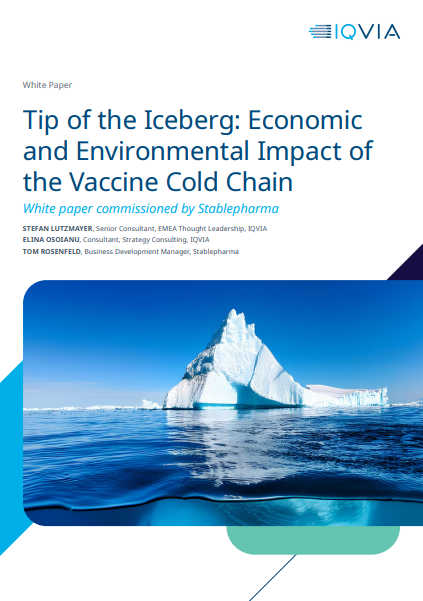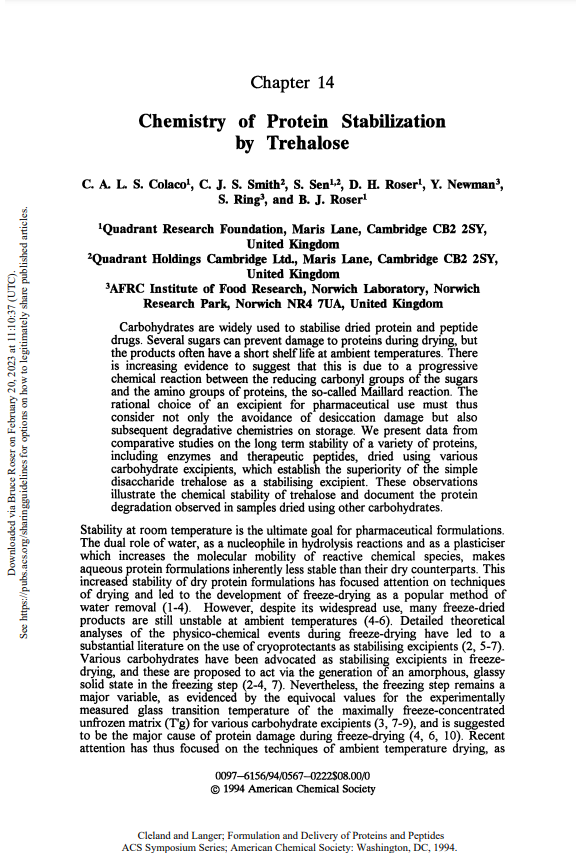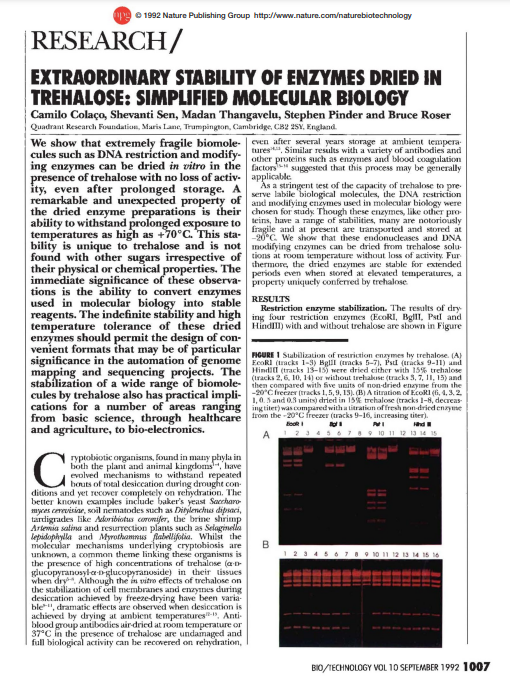Publications
Tip of the Iceberg: Economic and Environmental Impact of the Vaccine Cold Chain
Vaccines are undoubtedly among the most effective healthcare innovations of the 20th century, with an estimated 154 million lives saved to date as a result of global immunisation programmes. The rapid development and mass vaccination campaigns seen during the COVID-19 pandemic were a case in point.

A thermostable tetanus/diphtheria (Td) vaccine in the StablevaX™ pre-filled delivery system
Our scientific publication, which was published by the prestigious journal Vaccine (Elsevier) Volume 41, Issue 22, May 2023 presents our fridge-free, single-dose, thermostable vaccine (STVX-01) that has been developed in a pre-filled syringe used for vaccination. Full recovery of vaccine potency, after 7–10 months at 45°C, was shown by complete protection against supra-lethal doses of active toxins.

Chemistry of Protein Stabilisation by Trehalose, Quadrant Research Foundation
The following is a 30 year old paper written by Dr Bruce Roser (Chairman & Founder, Stablepharma Ltd) and his colleagues from the Food Research Institute in Norwich in 1994. Upon recently reviewing it, Dr Roser feels convinced that it is fundamentally one of the most important papers on the basic science of Trehalose stabilisation yet published.

Extraordinary Stability of Enzymes Dried in Trehalose: Simplified Molecular Biology
The following paper was written by Dr Bruce Roser (Chairman & Founder, Stablepharma Ltd) and his colleagues at Quadrant Research Institute, which was published by Nature Publishing Group in 1992. This paper highlights the most remarkable and dramatic demonstration of the high temperature, long term potency of trehalose as a stabiliser of the most well-known notoriously fragile proteins.

Industry Publications
UNICEF’s pooled procurement of vaccines has helped countries make big strides in their routine immunization efforts, and the procurement of the pentavalent vaccine stands out as a success story. The vaccine protects against diphtheria, tetanus, pertussis, hepatitis B and haemophilus influenzae type b – five potentially fatal diseases.
This National Vaccine Wastage Assessment by Unicef.org highlights a recent study that shows an average 16 times greater return as compared to the investment made in the National Immunization Programme, proving that immunization is one of the best cost-effective interventions for vaccine-preventable diseases.
The assessment ensured active participation of all Immunization stakeholders such as World Health Organization (WHO), United Nations Development Programme (UNDP), John Snow Inc. (JSI), Immunization Technical Support Unit (ITSU), National Cold Chain Resource Centre (NCCRC) and medical colleges. The field visit for data collection was held from 24 February to 2 March 2019
At least $25.9 million in Australian vaccines has been lost to cold chain breaches since 2014, but incomplete government statistics mean the final total could be much higher.
Because lifesaving vaccines should be made available to all citizens around the world, they are carefully developed and manufactured to be safe, effective and, importantly, relatively cheap to be affordable by everyone.
It is, however, widely assumed that any additional manufacturing steps necessary to stabilise vaccines, such as the StablevaX™ technology which reformulates existing approved vaccines to fridge-free status, could render them too expensive. This is the opposite of the truth. The economic benefits to low-income countries of having even a few of their vaccines stable at room temperature, thereby not requiring the refrigerated cold chain, have been authoritatively documented and reported in the following paper. In addition, the considerable overall savings that can be achieved, even with more expensive versions are both surprising and gratifying.
It’s been true since Edward Jenner’s day: finding a vaccine is just the first step. Getting it out into the world demands a lot more problem-solving.
